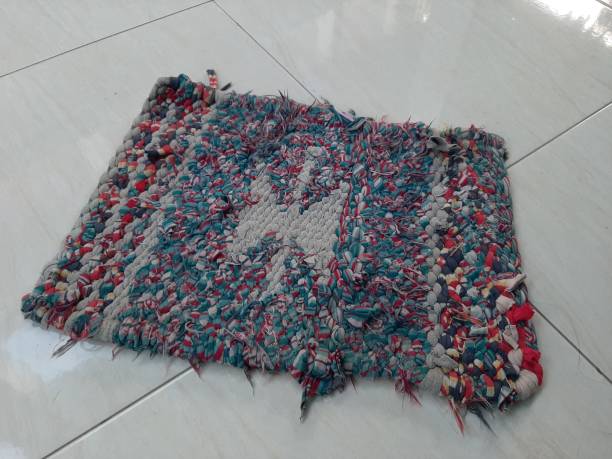Careless cleaners treat all rugs the same. “Wool’s wool, so what?
The majority of people don’t bother with a dye test. Why? Why? This should be done for every rug and only takes a few minutes. You can use a pH-high solution or, my favorite hot water to test a small section on both the front and back.
Some cleaners are careless and do the dye test. However, they then think that applying a dye-stabilizing or dye-locking solution to the rug will be bulletproof against bleeding. This is not true if your rug’s colors crock on a damp or dry towel.
This problem is when the color sticks to a damp or dry towel. This is especially true if it’s a dark color.
This tribal rug is from Afghanistan. In tribal areas, particularly war-torn ones, like this weaving region in Afghanistan, there is often insufficient water to wash and scrub the wool thoroughly to remove excess dyes or other impurities. You have a rug with excess dyes in the wool. It will move when you wash it, so it is important to be very skilled.
Sometimes the crocking does not come from the excess dye but rather from the color added after the rug has been woven.
These rugs are called over-dyed rugs, and they come in two different types:
TEA WASHED RUGS
Tea wash is applied to many rugs, especially those from India, Pakistan, and China. It is also known as henna dye or “antiqued” rugs because the brown color gives them a muted appearance.
They range from browns, golds, and yellows. The colors darker the rug, and the fringes of white cotton, beige or brown.
Better quality rugs will be properly soaked to allow even application or multiple layers to ensure good saturation and bonding with the tea wash dye.
These lesser-quality treatments are usually sprayed only on one side. They will often fail a dye test. No matter how gently you clean, the over-dye will come off. This is like spraying on fake tan. It works until you take a shower.
Untwist the fringe tassels to check if the white is under the beige color.
While inspecting your rug, be sure to check for any other damage. Tea wash often covers damage like rug dye bleeding or other stains.
You should tell your client about the over-dyed rug BEFORE cleaning it. Some of it will likely come off, no matter how gently you handle it. Even if the rug crocks, it’s likely that some of the over-dye will come off.
At least it can be cleaned. If it is a lower-quality application, you can tell them that it has been sprayed on and needs to be removed if the rug is to be washed properly.
Ink is a much more dangerous over-dyeing treatment than dye.
INKED RUGS
Rug dealers have been trying to conceal small damaged areas on antique rugs for years by using Indian ink or painting worn areas.
Unfortunately, this practice has expanded, and some rugs are dangerous.
This rug is an example that shows one of the risks of purchasing a rug online from one of these mass-market retailers. You can “try before you buy” and then take the rug out to check it. You can also take a handkerchief to the store and test it for color. This will ensure that you do not buy inferior products.
This rug would be a nightmare for a rug cleaner. This rug is blotchy and dark because every color has been over-colored with ink. You will see dark ink at the tips when you open the fibers.
Even if you get this rug wet, the inks will pool and ruin the rug and your washing floor.
Ink will not be affected by a dye-stabilizing or locking solution.
This rug and similar ones are defective products… and not washable. In the case of this rug, the ink on the rug spread to the wall-to-wall flooring underneath. This led to an expensive problem for its owner.
Rug cleaners are in more danger than ever today, as there is a push to reduce production costs and to get rugs on the market quicker and cheaper.

